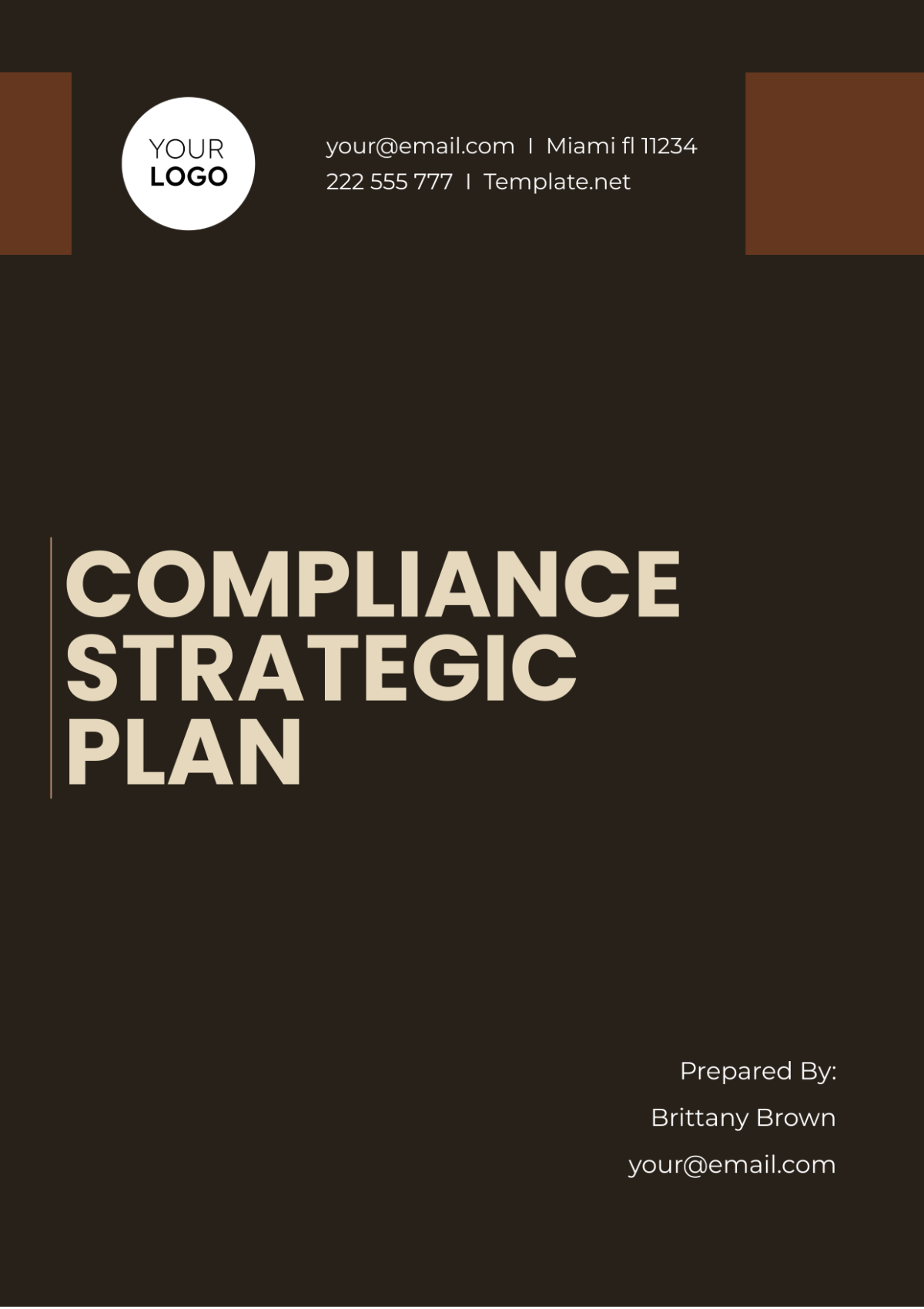Free Compliance Strategic Plan

I. Executive Summary
1.1 Overview of the Compliance Strategic Plan
The Compliance Strategic Plan outlines our organization's commitment to upholding legal and regulatory standards, ensuring ethical conduct, and mitigating compliance risks.
1.2 Objectives and key focus areas of the compliance initiatives
Ensure full compliance with relevant laws, regulations, and industry standards.
Promote a culture of integrity and accountability across all levels of the organization.
1.3 Importance of compliance for the organization
Compliance is essential for maintaining trust with stakeholders, minimizing legal risks, and sustaining our reputation as a responsible corporate citizen.
II. Compliance Vision and Mission
2.1 Vision statement
To become a benchmark for compliance excellence, fostering trust and sustainability in everything we do.
2.2 Mission statement
Our mission is to proactively identify, address, and mitigate compliance risks while promoting a culture that values integrity, transparency, and ethical behavior.
III. Compliance Governance Structure
3.1 Organizational chart
Chief Compliance Officer (CCO) reporting directly to the CEO.
Compliance Committee comprising senior management representatives from key departments.
3.2 Roles and responsibilities
CCO: Oversee and coordinate all compliance activities.
Compliance Committee: Provide oversight and guidance on compliance matters.
IV. Compliance Risk Assessment
Conduct a comprehensive review of applicable laws, regulations, and industry standards affecting our operations.
Evaluate existing policies and procedures to ensure alignment with regulatory requirements and industry best practices.
Identify and prioritize compliance risks based on likelihood and potential impact on the organization.
V. Compliance Objectives
Achieve 100% compliance with all regulatory obligations by the end of the fiscal year.
Implement proactive measures to address emerging compliance challenges and trends.
VI. Compliance Strategies and Action Plans
Implement automated monitoring tools to track regulatory changes and ensure timely updates to policies and procedures.
Create a schedule for compliance tasks detailing crucial actions and their corresponding deadlines, and attribute responsibility for each task to the applicable departments or people.
VII. Compliance Training and Awareness
Conduct regular compliance training sessions for employees at all levels, emphasizing the importance of ethical behavior and adherence to policies.
Utilize internal newsletters, workshops, and online resources to promote awareness and engagement in compliance initiatives.
VIII. Compliance Monitoring and Reporting
The rate of completed compliance audits, along with the count of recorded compliance incidents and their resolution status.
Establish a centralized reporting system for documenting and communicating compliance-related activities and outcomes to senior management and the board.
IX. Compliance Review and Continuous Improvement
Conduct quarterly reviews of compliance performance against objectives and KPIs.
Solicit feedback from stakeholders and use insights to enhance compliance policies, training programs, and monitoring processes.
X. Signature
I, [Your Name], acknowledge that I have reviewed and approved the Compliance Strategic Plan outlined above on behalf of [Your Company Name].

[Your Name]
Chief Compliance Officer
[Date]
- 100% Customizable, free editor
- Access 1 Million+ Templates, photo’s & graphics
- Download or share as a template
- Click and replace photos, graphics, text, backgrounds
- Resize, crop, AI write & more
- Access advanced editor
Explore the Compliance Strategic Plan Template on Template.net—a comprehensive tool for developing strategic initiatives. This editable and customizable template allows you to tailor your plan to organizational needs. Utilize our Ai Editor Tool to modify content, charts, and timelines effortlessly. Craft a robust compliance strategy with this template, designed to optimize organizational performance and adherence to regulations.





























